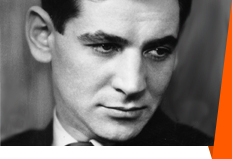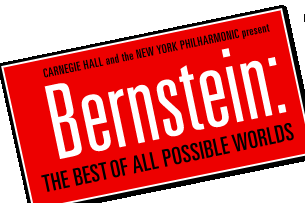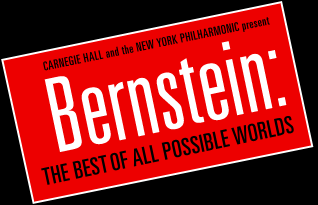
NOTES ON THE PIECES
- Leonard Bernstein
- Arias and Barcarolles
- Halil
- Concerto for Orchestra (Jubilee Games)
- Mass
- On the Town
- Prelude, Fugue and Riffs
- Serenade (After Plato’s Symposium)
- Symphony No. 1, “Jeremiah”
- Symphony No. 2, “The Age of Anxiety”
- Symphony No. 3, “Kaddish”
- West Side Story Suites
Serenade (After Plato’s Symposium)
Bernstein’s Serenade (After Plato’s Symposium), a “violin concerto” for soloist, string orchestra, harp, and percussion, probably did itself no favors by having such an erudite title. Bernstein chose the title “Serenade” (after the Italian sera, or “evening piece”), while the Symposium—Plato’s examination of the many aspects of love, as defined by his Athenian colleagues—was simply used by Bernstein to stimulate his creative energies.
Excerpt from Bernstein’s Serenade after Plato’s “Symposium” (I. Phaedrus: Pausanias (Lento - Allegro marcato))
New York Philharmonic / Leonard Bernstein, Conductor; Zino Francescatti, Violin. Sony Classical SK 60559.
Find this and more of Leonard Bernstein’s work at ArkivMusic.com ›
That’s not to say that Bernstein didn’t take the ideas in Symposium seriously; throughout his life, he was concerned with learning about—and strengthening—the emotional bonds that connect people. He once said “I feel, love, need, and respect people above all else … I believe in man’s unconscious, the deep spring from which comes his power to communicate and to love … all art’s a combination of these powers.” For Bernstein, who described his violin showpiece as “a series of related statements in praise of love,” his Serenade was indeed an artwork that expressed this force.
—Paul Myers
Paul Myers, a classical record producer for more than 40 years, is the author of several books, including a biography of Leonard Bernstein (Phaidon).
© 2001–2008 Carnegie Hall Corporation
- Home
- |
- Multimedia
- |
- Press
- |
- Partners
- |
- Supporters





